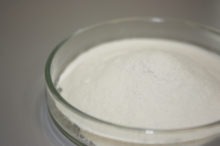Is extinguishing powder toxic?
One of the most common questions we are asked is whether extinguishing powder can be classified as a dangerous, toxic, or harmful product. None of these three.
Extinguishing powder: is it dangerous for human beings?
Let us make it clear that fire extinguishing powder is not harmful to human beings.
In fact, it is classified by the CLP Regulation (No. 1272/2008) as a non-hazardous and non-toxic product, being formed mainly of monoammonium phosphate, ammonium sulphate and additives in varying proportions (here an article on the composition of ABC powders).
Extinguishing powder: is it irritating?
However, extinguishing powder, if inhaled, can be irritating to the respiratory tract.
This is the consequence of its composition: being a pulverulent product consisting of very fine particles, at the time of leakage or during its handling at work, it can easily disperse into the environment and therefore be easily inhaled, and thus cause irritation.
For this reason, it is recommended to wear face masks in the workplace and to ventilate the environment.
Following the discharge of the extinguisher, and then after its actual use, it is advisable to aerate the room and move away favouring breathing in the open air.
Where can you find information about the fire extinguishing powder?
All information can be found in the Safety Data Sheet (SDS), which are not mandatory for extinguishing powders.
As they are not classified as dangerous, they can be marketed without this document.
However, it is extremely important as it provides useful information, including first aid measures (sect. 4), handling and storage (sect. 7) and disposal considerations (sect. 13).
Exhausted extinguishing powder: dangerous or not dangerous?
Even during the end of life, extinguishing powder is not harmful to health.
However, we must ask, what is the classification of the product for a correct waste management.

